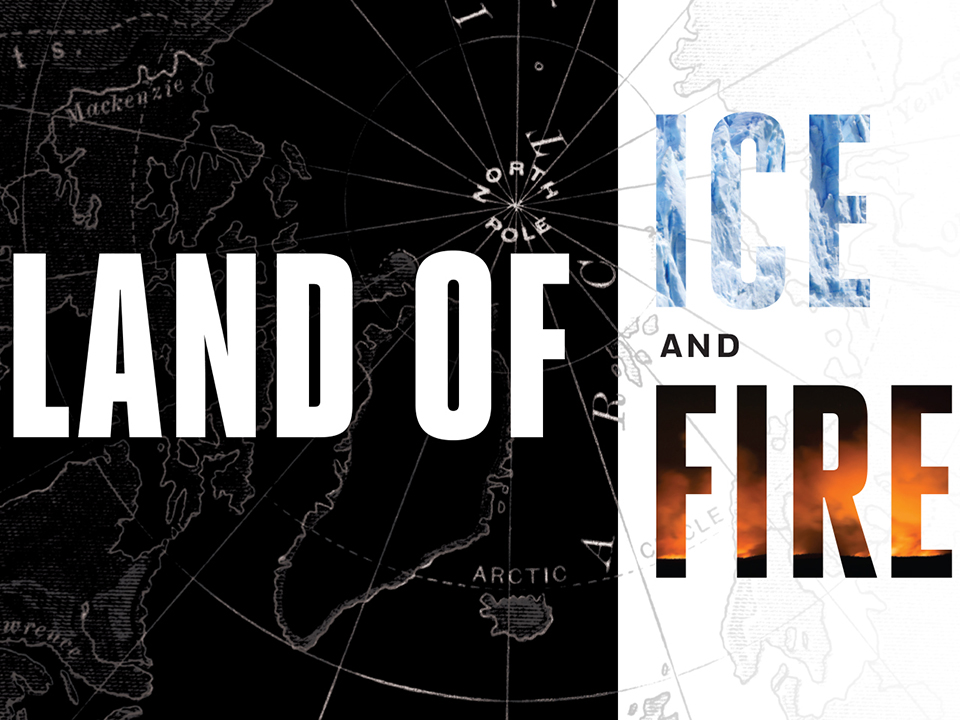In the latest issue of GW Magazine, science writer Sarah C.P. Williams reports on the turbulent changes happening in the Arctic due to climate change and how researchers from across GW are working together to understand the impact of those changes on Arctic cities and communities from Alaska to Siberia. The following is an excerpt from the article. To read the full story, visit GW Magazine.
Every year, crews of Iñupiat men paddle from the northernmost reaches of Alaska into the Arctic Ocean in search of walruses, seals and bowhead whales. They float their catches back to land and—stocked with enough meat to last many months—lower it deep into the frozen ground.
In recent years, however, these ice cellars—or siguaq in Iñupiaq—have started to collapse, threatening the food security of entire communities. And it’s not just in Alaska. Ice cellars used by subsistence hunters in northern Siberia are also disappearing or decaying as the ground warms, says Dmitry Streletskiy, an associate professor of geography at GW.
“Imagine that you have a freezer—minus 18 degrees, and it becomes minus 15, minus 12, minus 10 and then minus 4. The meat is still frozen, but already some bacteria, mold starts to grow.”
To help intervene, GW researchers installed temperature monitors in traditional Iñupiat ice cellars in Utqiagvik, Alaska. They also mapped the cellars—71 in total—to help direct snow plow drivers away. (Counterintuitively, extra snow on top of an ice cellar can insulate and warm it.)
But the thawing siguaq are the almost literal tip of the iceberg when it comes to the challenges currently facing the people who call the Arctic home. With climate change, urbanization, political tensions, changing tourism and the boom-bust cycles driven by resource extraction, the Arctic is a place of upheaval. Unusual storms, increased wildfires, landslides, poor air quality and collapsing buildings are just some of what people there have faced in recent years.
The Arctic is “the canary in the coal mine,” says Robert Orttung, research professor of international affairs at GW. “What happens up there in the north is what’s going to happen to the rest of the planet next.”
In 2016, Orttung spearheaded the Arctic Partnership for International Research and Education (PIRE) project, an international research network based out of GW that aims to promote greater urban sustainability in the Arctic.
The project was funded by the National Science Foundation (NSF), which, in 2016, unveiled “Navigating the New Arctic” as one of its “10 Big Ideas”—grand challenges that identified areas for investment at the frontiers of science and engineering. In the Arctic, the federal agency sought to spur multidisciplinary research that would advance understanding of the local and global effects of a rapidly changing region.
Since 2016, more than a dozen scientists across eight schools at GW have received approximately $8 million in funding for Arctic research, much of it from NSF. They study areas ranging from geography, electrical engineering and transportation to politics and infectious disease.
GW Geography Research Scientist Vera Kuklina, for example, is leading a new NSF-funded project to study Arctic “frozen commons”— ice, snow and permafrost landscapes collectively used and managed by Indigenous peoples, local communities and governments. Kuklina comes from a nomadic, Mongolian-speaking Indigenous group in Russia and is passionate about including local people in research and planning.
“There’s a lot of knowledge that isn’t written down anywhere but exists about how people in the Arctic have adapted and kept in balance relations with their environment,” she says.
The Arctic is a diverse place, of course—small towns in Alaska may, on the surface, have almost nothing other than their latitude in common with industrial cities of Siberia. But when you look deeper at the political fabric of Arctic locales, you find connections, Orttung says.
“Throughout the Arctic, the drivers of change right now are the climate and the demand for resources,” he says. “Those shape everything we do.”


